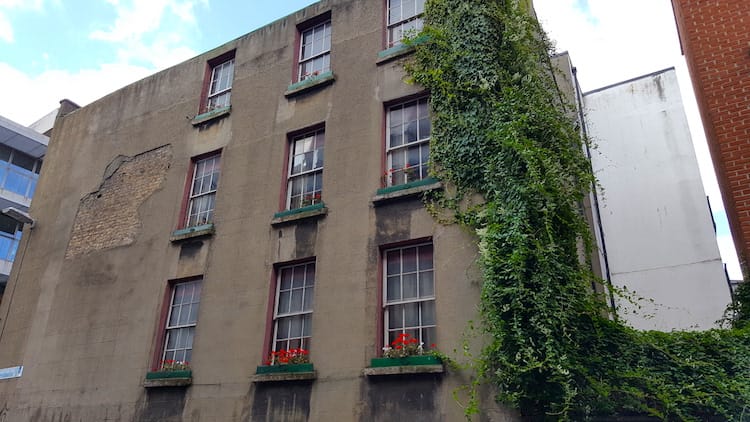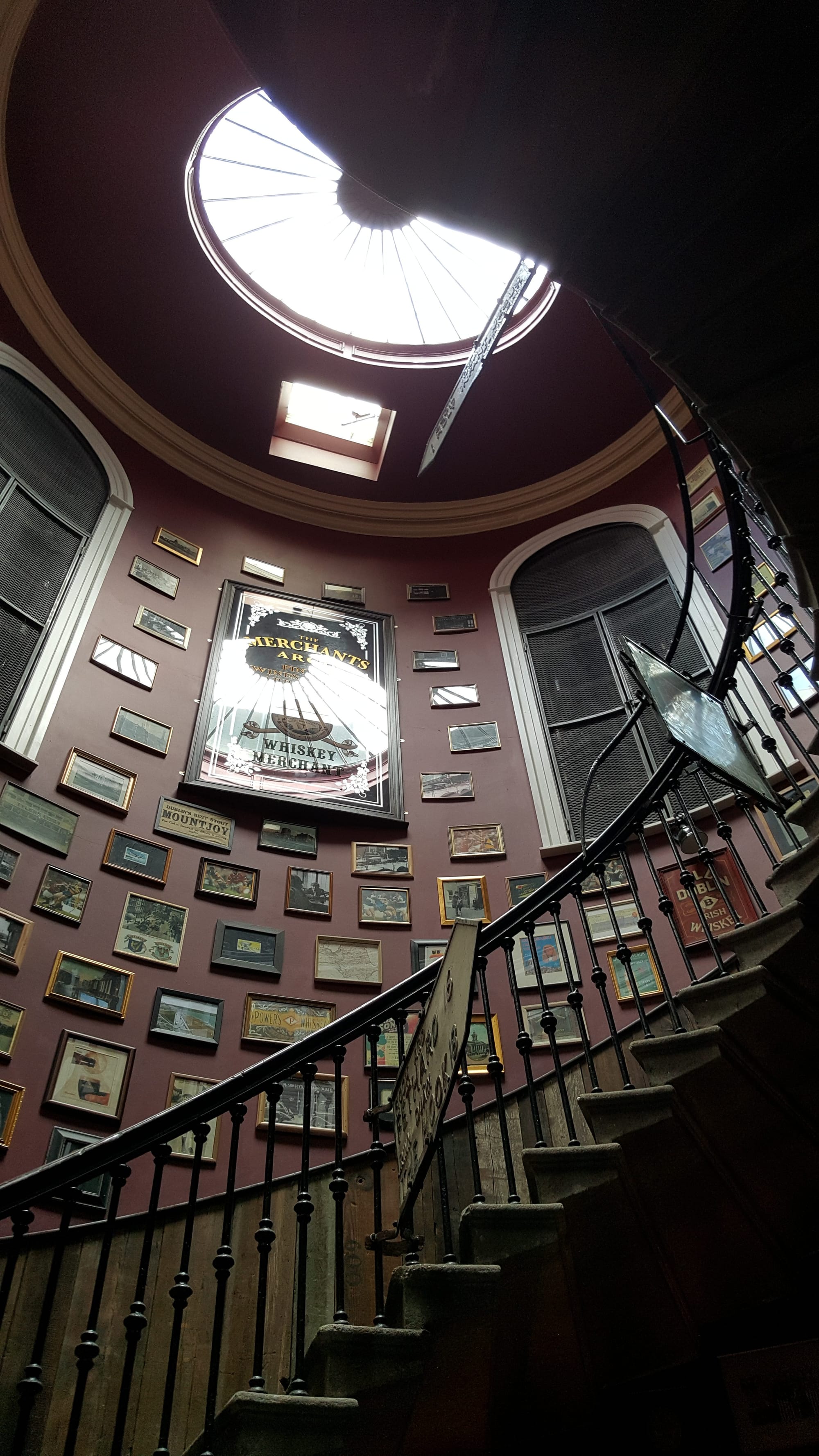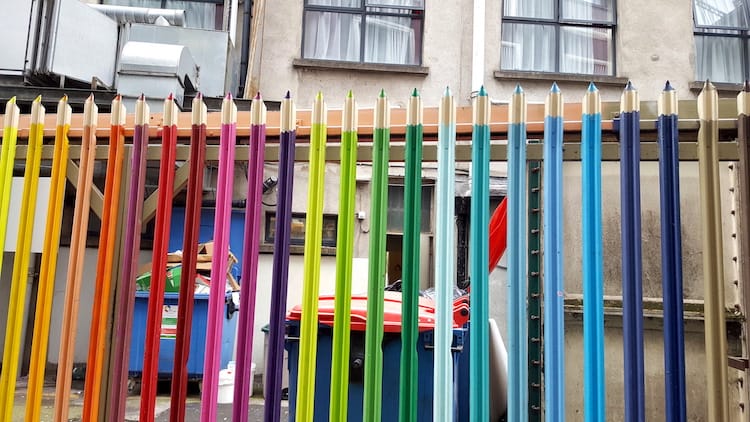Nobody caught illegally dumping yet by new north inner-city CCTV
But the scheme is a success, said a council official's report, as that shows the cameras are a deterrent.
In the latest in his Dublin local history series, Maurice Curtis tries to uncover the many layers of Temple Bar.

Maurice Curtis wriggles as he rubs his back on the corner of the building, where a shiny black bullet-shaped sculpture sticks out from the wall.
“This is Idler’s Corner, right? And you have to scratch your back,” the local historian says. On the other side of Meeting House Square, a girl watches from a bench and grins.
The sculpture — made in honour of architect Michael Scott, who designed the Busáras terminus — is one of many nuggets to get a mention in Curtis’ latest book, Temple Bar: A History.
“It’s one of those little things that would pass you by,” says Curtis, before continuing through the passage that leads onto Eustace Street.

To some, Temple Bar might be a neighbourhood to bypass, stocked with overpriced pints and cycle-rattling cobblestones.
But with his new book, Curtis is trying to change that, to get people to see the layers of history, and small embellishments, and to look up and notice the vistas, he said. “Hopefully, my book now will wake people up to what an incredible and amazing area of Dublin, Temple Bar is.”
Curtis has done 12 books on Dublin’s local history. This is the third of what he considers his Dublin trilogy, after The Liberties: A History (2013) and To Hell or Monto (2015). “They are three iconic areas of Dublin,” he says.
The series has grown from a love of social history — “I like to know what were people actually doing, how do they actually live,” he says — and was spurred on by a conversation with a friend from Paris a few years ago.
He said he loved Paris. She told him to look up and look around Dublin and appreciate what it has to offer. “So I started working on books so we actually treasure what we’re living in.”
He is a cyclist and a walker, so he often stops now to pause to look at a building, chat to strangers and pick up stories. “I found writing the book on Temple Bar was a voyage of discovery,” he said.
Curtis peeks through an old gate under a giant arch on Fishamble Street at a tall statue of composer George Frideric Handel, as he waves a baton. “What people aren’t aware of when it comes to Handel is that there’s a hidden statue of him, up here,” he says.

He follows the curve of the pavement and ducks into Darkey Kelly’s pub, where a transparent strip on the floor marks the route of the old Copper Alley, which used to be home to hidden passages and winding staircases and an infamous brothel that was easy to get into and hard to get out of.
“It goes on and on, this is from medieval times,” he says, as he looks through the glass of the fire-escape door.
In Temple Bar: A History, Curtis devotes some time to the area’s history as one of the most notorious red-light districts in Europe in the 18th century, and characters such as Darkey Kelly. “She ended her days being burnt as a witch,” he said, after the authorities said they had found five bodies in the basement.
There were other things he discovered about the darker side of Temple Bar. People don’t believe that there was an area nearby called Hell, but there was, he says. “I went to the Dublin archives and asked to see the old maps of Dublin for 1756,” he said.
“With the help of the magnifying glass, I actually found Hell,” he said. It was a lane on the map leading from the top of the hill to the far side of the cathedral. He points. The bells ring in the distance.
“The golden age of Dublin was in the 18th century that’s when you have all these different happenings,” he says. But there was massive inequality. “You had extremes,” he said.
As we walk eastward, he pauses and nods at almost every building, so many of which feature in the book. (There are so many characters, across such a broad sweep of time, that it’s good to dip in and dip out of, rather than necessarily read from front to back.)
The seeds of major events in Irish history can all be found in Temple Bar, he says. Oliver Cromwell’s operations were directed from the Crow’s Nest on Crow Street.
The son of William Temple, John Temple, was behind a book of propaganda that accused the Irish, wrongly, of massacring settlers, and gave Cromwell the motivation to carry out his bloody campaigns.
The book also covers the rise of the “Bucks” and legendary displays of arrogance by some of the upper-classes, and extends all the way through to the campaign to save Temple Bar from becoming a bus station, into contemporary times.
Curtis points to a tall, wide building that used to be run by Lundy Foot, who he says made a thriving business out of selling adulterated tobacco. “It’s a lovely building isn’t it?” he says.
We cross Parliament Street, and he points down to the corner that used to house the Evening Mail, where both Bram Stoker and Joseph Sheridan Le Fanu worked. “He was the father of lesbian vampires,” said Curtis.
On Eustace Street, Curtis admires the homes built, he says, by Quakers, Presbyterians, and Huguenots. “They were encouraged to come to Dublin because of the persecution against them in France and Belgium. When you look up at them, it’s a fantastic legacy of the Quakers and all those communities.”
At the top of Spranger’s Yard, he points to the whimsical pipes that loll from the top of the multi-storey building. “Did you ever see something like this now?” he says. “Reminds you of Salvador Dali.”

There are the Gibbsian doorways near the Central Bank and the elegant Queen-Anne-style facades.
He rests his elbow on the window frame of a salon and peers in.
“Look, they don’t mind you, see … she’s real … ,” he says, nodding towards a girl with white-blonde hair who is sat in front a mirror.
“Hello?” she says, bemused.
“See?!” he says.
He marvels at the fence painted like colourful pencils on a back alley, and pauses outside the building on Fleet Street from where Delia Larkin and the Irish Women Workers’ Union battled for more holiday for workers.
At the end of the street, we merge with the crowds on Westmoreland Street and are back out into the city.
Temple Bar: A History by Maurice Curtis (Dublin: The History Press Ireland, 2016)